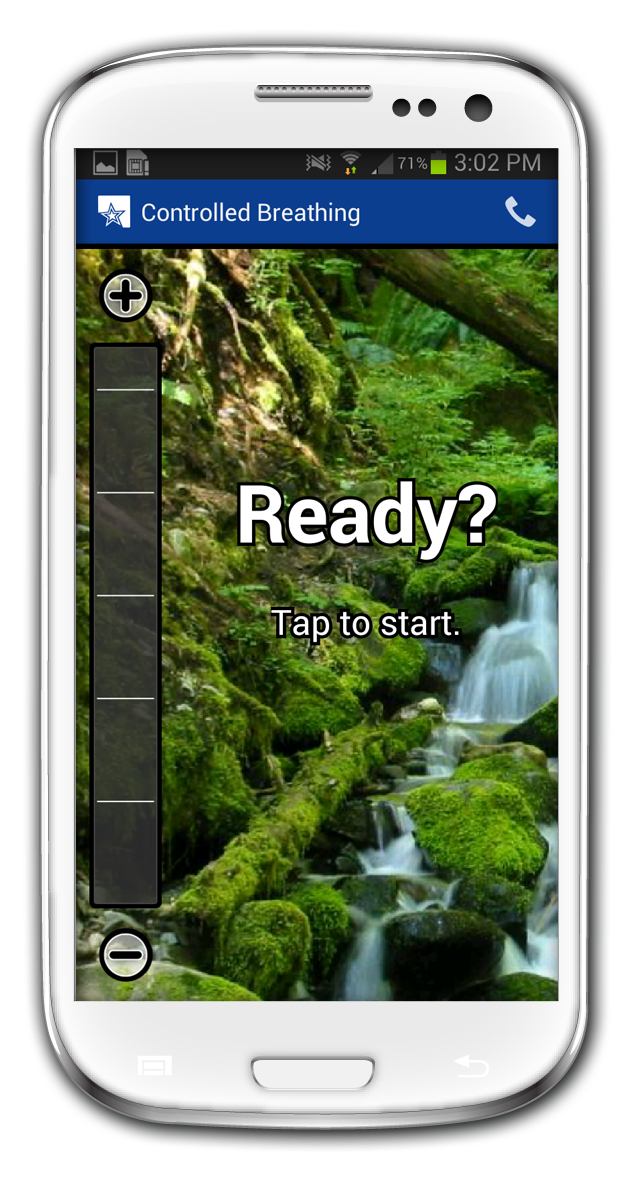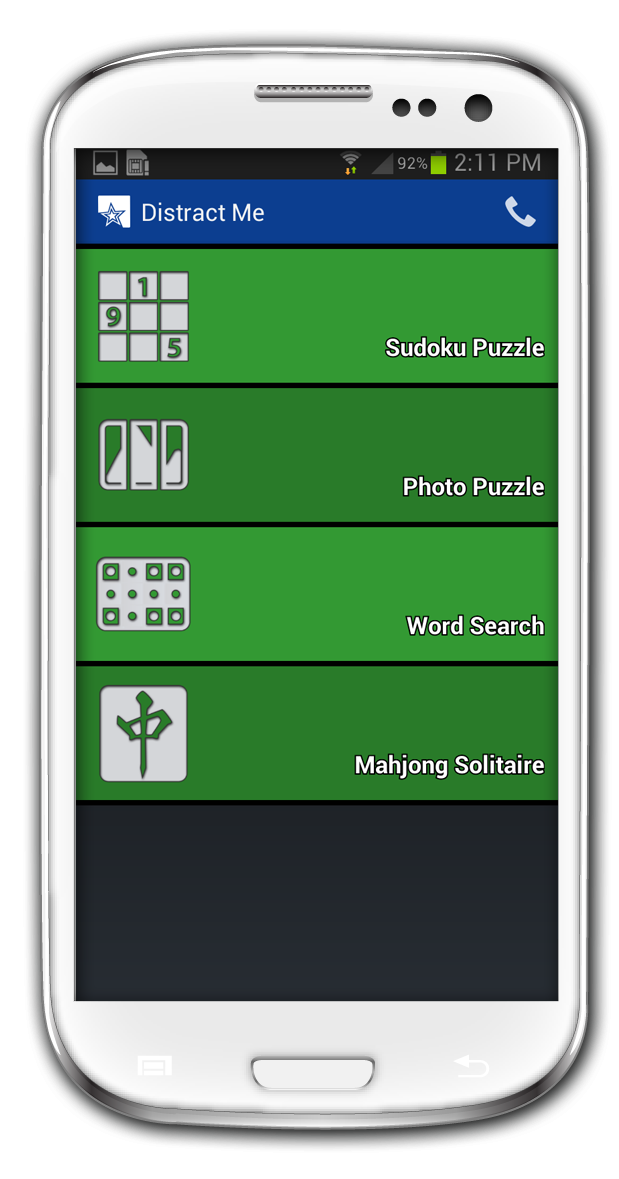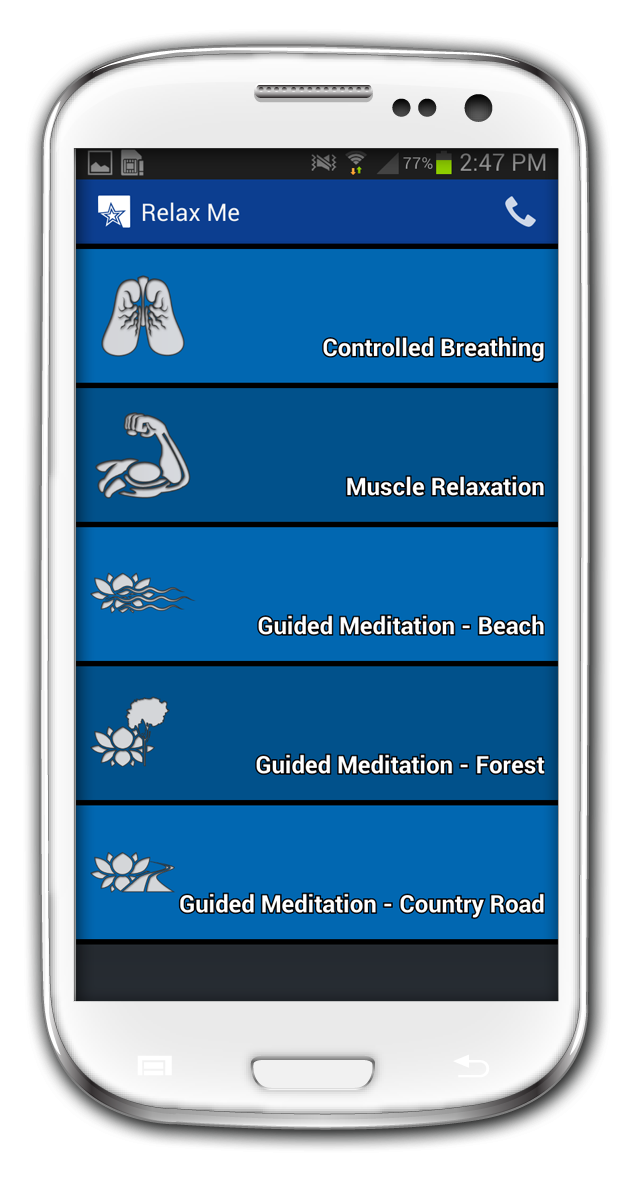Virtual Hope Box
The Virtual Hope Box mobile application received the 2014 Department of Defense Innovation Award for its unique application of technology in supporting behavioral health in service members and military families.
The Virtual Hope Box (VHB) is a smartphone application designed for use by patients and their behavioral health providers as an accessory to treatment. The VHB contains simple tools to help patients with coping, relaxation, distraction, and positive thinking.
Patients and providers can work together to personalize the VHB content on the patient's own smartphone according to the patient's specific needs. The patient can then use the VHB away from clinic, continuing to add or change content as needed.
The VHB provides help with emotional regulation and coping with stress via personalized supportive audio, video, pictures, games, mindfulness exercises, positive messages and activity planning, inspirational quotes, coping statements, and other tools.
Screenshots
Android smartphone screenshots displayed below.
FAQ
What is the Virtual Hope Box?
The Virtual Hope Box (VHB) is a free mobile application for behavioral health patients to use with guidance from their providers.
What is the purpose of the VHB?
The purpose of the VHB is to help patients decrease their experience of distress by encouraging and facilitating healthy coping and emotion regulation skills.
Who developed the VHB?
The VHB was developed by the National Center for Telehealth and Technology (T2), a US Department of Defense Center of Excellence for Psychological Health and Traumatic Brain Injury.
Who should use the VHB?
The VHB app has been developed specifically for use by patients who are engaged in treatment with a behavioral health provider.
How does the VHB work?
Patients download the free VHB app to their personal mobile devices, including smartphones and tablet computers. Beginning in the clinic, users work with their behavioral health providers to add individually tailored and customized content into various sections of the app. Once oriented to the process, patients may continue to add content at any time. That highly personalized content is then available to patients at any time they have access to their mobile device, which means that the VHB tools and content are highly portable and almost always available to a user in distress.
What kind of content and tools does VHB provide?
Patients can use the VHB to store a variety of rich multimedia content that they find personally supportive in times of need. For example, the patient can include family photos, videos and recorded messages from loved ones, inspirational quotes, music they find especially soothing, reminders of previous successes, positive life experiences and future aspirations, and affirmations of their worth in their VHB. A patient can also collaborate with their provider to create coping cards to use in response to personal problem areas they experience. Finally, the VHB provides the patient with positive activity planning, distraction tools, and interactive relaxation exercises including guided imagery, controlled breathing and muscle relaxation.
Are there any groups of patients for whom the Virtual Hope Box mobile app might be especially useful?
The VHB contains coping tools that may be helpful for addressing many issues. However, it may also have particular value in specific patient populations. For example, a grant from the Military Suicide Research Consortium funded a pilot project and a randomized controlled trial to study the potential of the VHB for helping patients at high risk of intentional self-harm. By helping high-risk patients cope with distress and urges to die, the VHB may offer providers a useful accessory to care.















